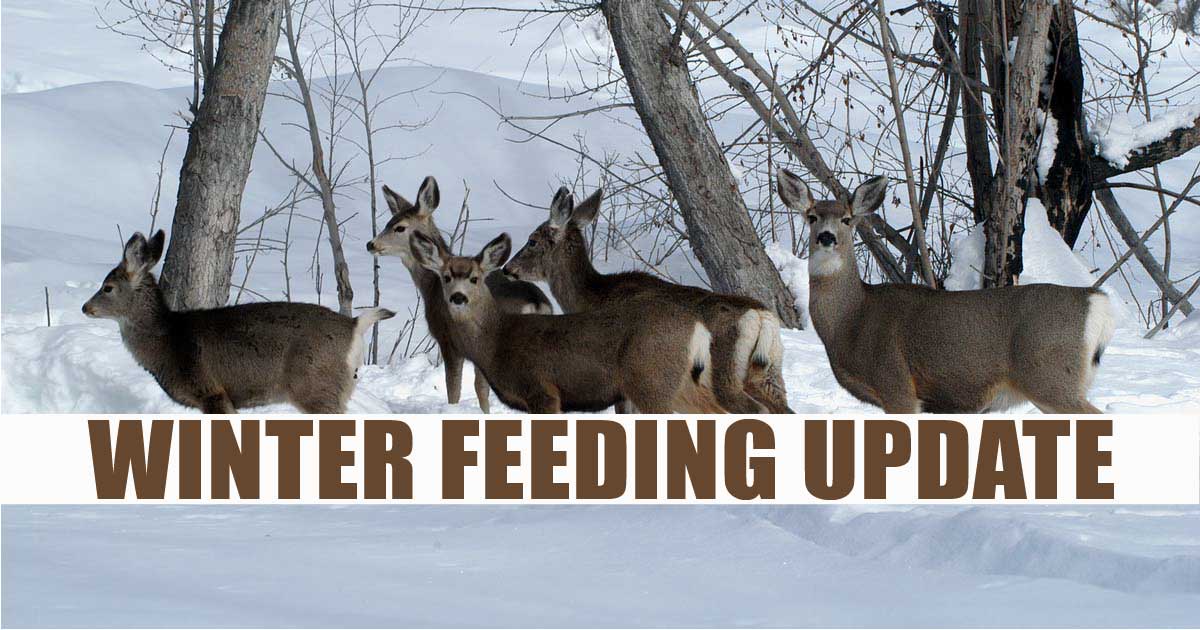
Frigid temperatures and heavy snowfall across much of Idaho this winter have driven big game animals to low elevations and prompted Idaho Fish and Game to implement emergency feeding in the Southwest, the Magic Valley, the Southeast and the Upper Snake regions, which encompass most of southern and eastern Idaho.
The agency has winter feeding advisory committees in most regions of the state, and those committees meet frequently to observe snowfall, temperatures, herd health and other factors to decide if more feeding is warranted.
Emergency feeding operations have several goals, including helping some animals get through winter, particularly mule deer, and also keeping wildlife away from populated areas, highways and agriculture operations. Elk tend to be hardier than deer and more capable of withstanding winter weather, but they also form large herds that can cause problems to ranchers, farmers and other land owners.
While this has been a challenging winter, wildlife managers pointed out that most big game animals came into the winter in fair-to-excellent condition depending on the area, but some winter mortality is expected.
“Body condition is such a key thing for deer and elk, especially deer, and we’re very lucky many came into winter in good shape” - Toby Boudreau
“Body condition is such a key thing for deer and elk, especially deer, and we’re very lucky many came into winter in good shape in our region” said Toby Boudreau, F&G’s Magic Valley region supervisor. “If we were going to have a bad winter, this was the winter to have it because animals are in such good shape.”
Fish and Game officials are dealing with the aftermath of summer wildfires, particularly in eastern Idaho where the department is feeding nearly 4,000 elk in the Tex Creek area after large swaths of winter range burned. The feeding operation is intended not only to help animals through the winter, but also keep them away from private lands and highways.
Another feeding operation in the Weiser area is to keep wintering elk off of private lands where they can become a nuisance. Wildlife managers are feeding in Garden Valley and Lowman to help wintering mule deer herds and also keep elk away from towns and homes.
Fish and Game annually operates an elk feeding site near Ketchum and has started several others this winter to feed animals and keep large herds out of subdivisions and towns. Also, work done in the area during 2016 to fence off haystacks is paying dividends by keeping elk away from ranches.
"The stackyard fencing we built has made a huge difference." — Toby Boudreau
"The good news is we had lots of places that elk were getting into last year, and this year it's not a problem," Boudreau said. "The stackyard fencing we built has made a huge difference."
Wildlife managers in north and north-central Idaho report they’re seeing mostly normal winter conditions and do not expect to start any winter feeding. Big game animals typically winter over large areas in those regions, so there’s rarely need for winter feeding, nor is it typically feasible during normal winters because the animals are so widely dispersed.
Deep snow and frigid temperatures can be challenging to all wildlife, and people can help them survive by leaving them alone. Animals have a limited amount of fat reserves, and when those are gone, animals are more susceptible to disease, predation and starvation.

